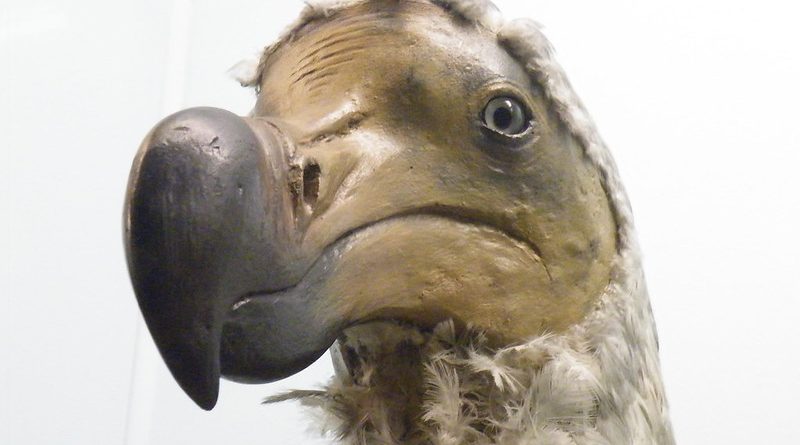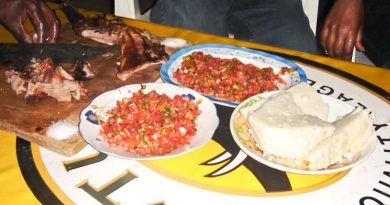Dead as a Dodo: The Extinct Bird of Mauritius
Nature Facts
Where: Mauritius, Indian Ocean
When: First sighted in late 1600s, destroyed by man by 1861
Nature facts: A flightless bird destroyed by its fearlessness and alien species brought over by European settlers
Where to see: A skeleton and life-size reconstruction in Natural History Museum, Port Louis, Mauritius
Mauritius was once home to an amazing array of indigenous birds and land creatures, until the arrival of the first European explorers in the seventeenth century. They ate half the indigenous animal population, including the dodo – that flightless bird of near-mythical status that organised the Caucus Race in Lewis Carroll’s children’s book, Alice in Wonderland.
History of the Demise of the Dodo
The dodo, named from the Dutch for ’round arse’, was first witnessed by Dutch sailors in the late 1600s and its last sighting was in 1861. The dodo is a symbol of man’s destruction but also a sign of stupidity, thus the expression, “dead as a dodo.” This three-foot tall flightless bird lived on fruit and nested on the ground, was entirely fearless of humans, and took advantage of the island’s lack of predators.
However, it was not humans as prey that destroyed the dodo – in fact the Portuguese settler called it walgvogel (‘ghastly bird’) because however it was cooked, its meat was as tough as boots and foul (rather than fowl) tasting. It was other wildlife on Mauritius that led to its downfall – principally the alien species that the Europeans brought with them – pigs, rats, and monkeys.
Survival of the Dodo Tree
Destroying one species has a knock-on effect for other flora and fauna in the same region. In 1973, scientists discovered that a species of tree on Mauritius, commonly known as the dodo tree, was dying out with only thirteen specimens remaining, all of which were 300 years old, dating to the time the last dodo was killed. It was thought that the dodos ate the seeds of the tree and the seeds only became active after passing through the bird. Scientists found a solution by using turkeys to re-fertilize the dodo tree.
The Recreation of the Dodo
It is curious that a bird without wings can exist on an island. Experts belief the dodo could fly but once it got to Mauritius it chose not to; it had a strange reverse evolution of trying to achieve flightlessness. Curiouser and curiouser are claims springing from around 1990 that the dodo still exists – including one from Harry Potter author J. K. Rowling who fictionally claimed the dodo is alive and well, but it is called the Diricawl by wizards. This magical bird can vanish and reappear elsewhere, leading muggles (non-magical humans) to believe it is extinct.
But the truth is stranger than fiction. Scientists belief the technology exists to re-create a dodo from DNA, leading to nightmarish Jurassic Park visions of giant dodo taking over the island. As most of the island’s population is Hindu, re-incarnation sits fairly comfortably with their beliefs, but Mauritians are determined that if the dodo ever lives again it should do so in Mauritius.
Tourism and the Dodo
Today, Mauritians are more respectful of this strange, inflated pigeon of a bird and respect its legacy. A rampant dodo appears on the Mauritian coat of arms and Mauritians know the dodo mean the tourist dollar – in the international airport’s duty-free shop you’ll find wooden dodos, plaster dodos, fluffy toy dodos, and gem-studded gold dodos.
No complete bird exists, although several skeletons and reconstructions are in museums around the world, and a dodo egg is on display at the East London Museum in South Africa. Victorian scientists were fascinated by the story of the bird and went to great lengths to investigate its history. They made a reconstruction of a skeleton from a pile of old bones, which can be viewed in the Natural History Museum, a crumbling colonial building in Jardin de la Compagnie, Port Louis. Here you will also find an impressive life-size mock-up of the entire bird, which is a similar size to a turkey and sits inside a dusty cabinet.
More Information
Books
Dodo, The Bird Behind the Legend by Alan Grihault (who appeared in the TV show Globe Trekker: Indian Ocean Islands)
Order from IPC Ltd, Menagerie Road, Cassis, Mauritius. ISBN: 99903-38-15-9
Main image: Dodo, rjp, Flickr Creative Commons
By Susi O’Neill




